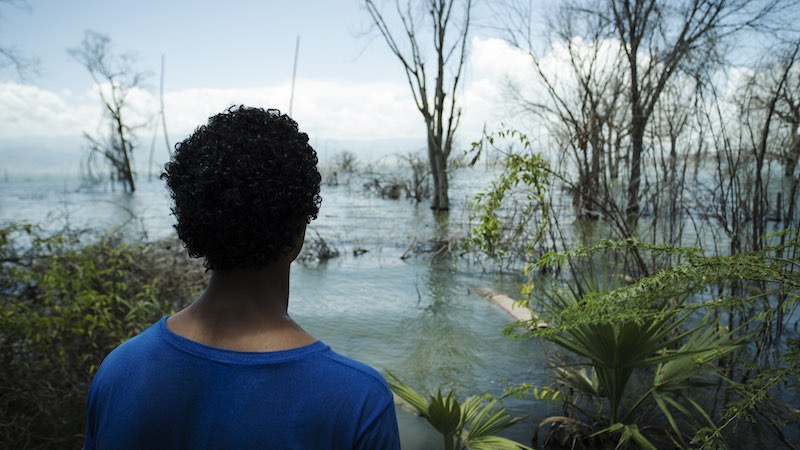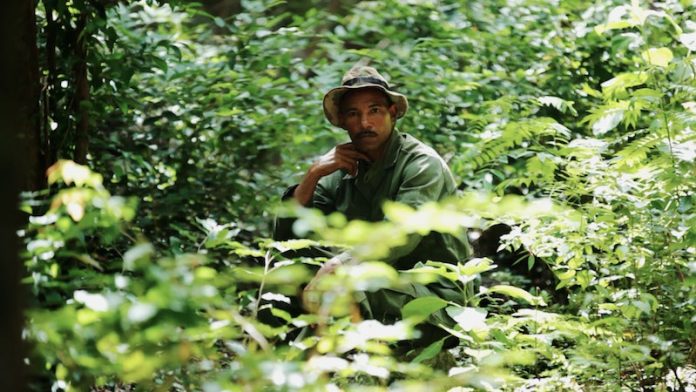(THIS ARTICLE IS MACHINE TRANSLATED by Google from Norwegian)
Although the Dominican Republic and Haiti share the same island, there are major differences between the two nations. Not least, the Dominican Republic has a relatively better economy, with a gross domestic product reportedly ten times higher than Haiti – which in turn is America's poorest country.
The documentary Death by a Thousand Cuts, which will be shown at the documentary film Human Rights Human Wrongs in Oslo this month, is based on a killing linked to illegal coal production in the border area between the two countries. In Haiti, the use of charcoal, which is still a widespread and sought after source of energy, has caused massive deforestation. This has led to many desperate Haitians extracting coal from the forest areas on the Dominican side of the border, something the Dominican authorities have trouble controlling. Nor can they prosecute law and border violators when they are back in their home country. And thus, very little sustainable use of the island's natural resources continues, with the risk of forest death spreading to the Dominican Republic – despite the fact that, unlike Haiti, the country has pursued an active policy of protecting its natural areas.
These are about economics and natural resources, and how both poverty and the absence of more general control are constantly resulting in very serious environmental damage.
Prejudice and hatred. The deceased in the film's murder case was a Dominican "park ranger", whose job was to stop this type of illegal activity. In 2012, Melaneo, as he was called, was found dead in the woods near the Haiti border, killed with multiple stabs. The main suspect was a Haitian citizen named Pablo Tipal, whom Melaneo may have taken in conducting illegal coal production on Dominican territory. However, Tipal is still on the loose, and the Haitians in the area he comes from seem generally unprepared to provide information about where he might be.
 However, the case is not as simple as it may sound. The two filmmakers Juan Mejita Botero and Jake Kheel have also not made any typical "true crime" documentary, but instead use this murder to paint a broader picture of the rather tense relationship between the two countries.
However, the case is not as simple as it may sound. The two filmmakers Juan Mejita Botero and Jake Kheel have also not made any typical "true crime" documentary, but instead use this murder to paint a broader picture of the rather tense relationship between the two countries.
Eventually we hear about excessively brutal behavior on the part of these rangers, and how the Haitians are met with prejudice, incitement and even a historical fear of "Haitification" among the Dominican population. This will also affect the family of the deceased forest ranger, as Melaneo was married to a Haitian woman who was forced to leave the Dominican Republic as a result of a more restrictive line against immigrants from the neighboring country. And if Tipal himself is not arrested, some of his immediate family members will be subjected to what appears to be a real blood feud. At the same time, it is not the poor Haitians who extract the fuel that make the most money from the illegal coal trade, it is rather more mafia-like organizations that do – organizations that, according to the film, may be affiliated with the Dominican Republic.
And if the suspect is not apprehended himself, some of his closest family members are exposed to what appears to be outright revenge.
The world in miniature. Death by a Thousand Cuts is a well-told and cinematically very well-made documentary, not least because of Juan Carlos Castañeda's competent photo. In form as well as content, the film is reminiscent Cartel Land, which was shown at Human Rights Human Wrongs last year, and which deals with border control between the United States and Mexico – although this Oscar-nominated documentary, to be honest, comes a lot closer to several dramatic events. Death by a Thousand Cuts is in essence more interview-based, but Botero and Kheel largely allow the actors to express themselves in relevant settings, and thus avoid a more TV-influenced experience of sedentary, talking heads.
 The film depicts a regional conflict that has not received much attention, and which it is therefore important to focus on in itself. Just as striking and fascinating, however, is that this story contains elements that can be transferred to a number of other conditions. Almost like a thumbnail of many of the world's conflicts acts Death by a Thousand Cuts about ethnic and national contradictions and what these can lead to in terms of discrimination, hatred and persecution – which in turn can be seen in the context of European colonialism and the disparaging consequences this has had for different countries. And not least, it is about the economy and natural resources, and how both poverty and the absence of more general control still result in very serious environmental damage.
The film depicts a regional conflict that has not received much attention, and which it is therefore important to focus on in itself. Just as striking and fascinating, however, is that this story contains elements that can be transferred to a number of other conditions. Almost like a thumbnail of many of the world's conflicts acts Death by a Thousand Cuts about ethnic and national contradictions and what these can lead to in terms of discrimination, hatred and persecution – which in turn can be seen in the context of European colonialism and the disparaging consequences this has had for different countries. And not least, it is about the economy and natural resources, and how both poverty and the absence of more general control still result in very serious environmental damage.
In the broader context that the film outlines, the deceased ranger is, in other words, far from the only one affected by potentially fatal stings.


